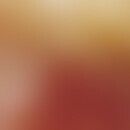Synonym(s)
Allergic plant dermatitis; Phytodermatitis; Phytoeczema; Plant allergy; Plant Eczema
DefinitionThis section has been translated automatically.
Contact dermatitis after sensitization due to the effect of plants and their products on the skin.
EtiopathogenesisThis section has been translated automatically.
- Allergic plant dermatitis occurs in people who are predisposed to it (e.g. florists). Here the sensitization rate is estimated at 5-10%. In Central Europe the composites (= Asteraceae = daisies) rank before tulips, astromerias (= formerly Liliaceae), daffodils, hyacinths and primroses. A higher incidence of primrose allergy is found among hobby breeders and housewives, as they are less aware of the allergic potential of these plants.
- Geographical and local conditions change the allergen spectrum considerably. In the Netherlands, for example, tulip allergy is the most widespread skin disease in people who are professionally disposed (tulip fingers). In England and Denmark, primrose allergy is the most common. In the USA 60-80% of the population is allergic to poison ivy (Rhus toxicodendron). In Hungary, sunflower allergy is predominant, in France artichoke allergy.
- The increasing use of "natural products" in medicinal ointments and body care products (e.g. marigolds, chamomile, witch hazel, etc.) should not be underestimated; sensitized persons must be informed accordingly.
You might also be interested in
ClinicThis section has been translated automatically.
- Mostly striped or bizarrely configured, itchy, red spots or plaques. In fresh lesions small blisters or even blisters are also found. In florists, gardeners and plant breeders, the changes occur primarily at the contact points of allergen exposure. Internal supply of the allergens can lead to exanthema.
- A clinically distinct form of allergic plant dermatitis is Airborn Contact Dermatitis (ABCD). This must be distinguished from polymorphic light dermatosis.
Notice! The chin shadow is free in polymorphic light dermatosis, in ABCD it is affected.
TherapyThis section has been translated automatically.
Listed in each case under the named clinical pictures. In the acute phase of skin inflammation, removal of any plant remains by washing with clear water. The skin lesions subside within a few days using mild corticosteroids.
ProphylaxisThis section has been translated automatically.
- The first priority is to educate patients and to avoid the triggering noxious agent in the future. Avoidance" refers to all measures which keep harmful influences away from the skin. Use of protective gloves made of leather, plastic or rubber, which must be impermeable to the allergens (Problem: Practical feasibility in daily work!) Clothing adapted to the work (protection of the arms, legs and neck). Regenerating and preserving skin care measures.
- In the event of occupational illness, an occupational disease report (BK report) must be filed. Important: Patients must be made aware of the possible wide distribution of the allergen, e.g. herbal extracts are used in soaps, shampoos, various cosmetics, "natural healing ointments", herbal teas, herbal liqueurs, suppositories, anti-rheumatic drugs and pills (garlic). Examples: tea tree oil, arnica camomile, marigold, yarrow, oakmoss, lavender, Peru balsam.
LiteratureThis section has been translated automatically.
- Darsow U et al (2003) Atopic patch test. Atopic eczema and allergy. dermatologist 54: 930-936
- Hausen BM, Vieluf K (1997) Allergy plants, plant allergens. Ecomed publishing house, Landsberg/Munich, S. 26-42
- Ozdemir C et al (2003) Allergic contact dermatitis to common ivy (Hedera helix L.). dermatologist 54: 966-969
- Schempp CM et al (2002) Plant-induced toxic and allergic dermatitis (phytodermatitis). Dermatologist 53: 93-97
Incoming links (2)
Occupational skin disease according to BK 5101; Occupational skin disease according to BK 5101;Outgoing links (16)
Airborne contact dermatitis; Artichoke; Chamomile real; Daffodil dermatitis; Glucorticosteroids topical; Lavender real; Oakmoss; Occupational skin disease according to BK 5101; Peru balsam; Poison ivy; ... Show allDisclaimer
Please ask your physician for a reliable diagnosis. This website is only meant as a reference.




